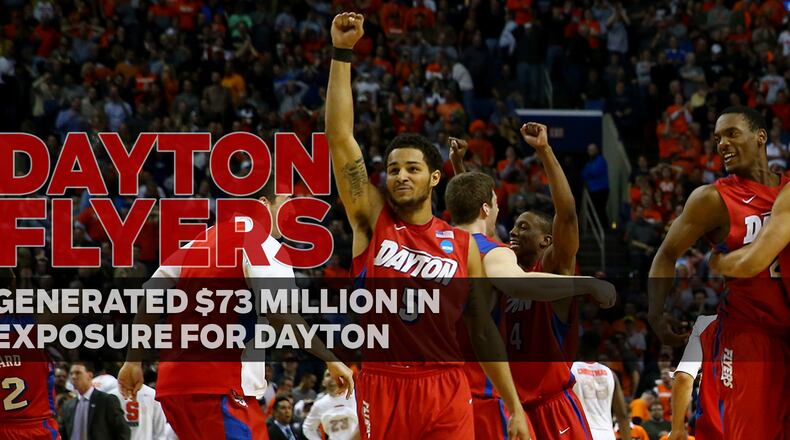But perhaps the biggest benefit of the Flyers’ tournament run for Dayton was boosting the city’s national profile in the eyes of sports fans, event organizers and potential visitors across the country, said Dayton City Commissioner Matt Joseph, who, along with fellow commissioner, Joey Williams, oversaw the study.
“Anything we do now that helps get a positive perception of the city out there in whatever way sort of ads to all of the other efforts we’re doing,” Joseph said. “Something like this; we couldn’t do ourselves. We couldn’t afford a $73 million advertising campaign to make Dayton look good.
“It’s just one piece, but we wanted to make sure people realized and appreciated the impact that it had,” he said. “And we wanted to make sure the University of Dayton knows that we appreciate it, too. They play a big role in our community in a lot more ways than just the basketball team.”
Joseph said he was surprised by the magnitude of media coverage of the Flyers, which appeared in 207 out of 210 major television markets in the United States, in addition to syndicated stories in Canada, Australia and the United Kingdom, according to the study.
From March 19 until March 30, the Flyers were mentioned on cable and syndicated network television 2,871 times, the study found.
“That’s a lot of value that we wouldn’t otherwise have,” Joseph said.
Flyers coverage also underscored the value of Twitter and Facebook as marketing tools for the city, according to Hilary Browning, a legislative aide and researcher for city commissioners.
The Flyers were the most “tweeted” about team in the NCAA tournament, according to the social media analytics group Simply Measured.
The vast majority of those tweets were originated locally and included a “Dayton” hashtag, Browning said.
“What I found most often was that Dayton was frequently mentioned as a basketball town, as a Cinderella story, and that the team was emblematic of the entire city,” she said. “When one of your most popular hashtags is Dayton that buoys us all because its kind of like a rising tide; we’re bringing recognition not just to the team, but to the entire area.”
The commissioners’ study focused on the increased awareness of Dayton as a result of media coverage and ad spending during the NCAA tournament. The economic impact of the Flyer’s success locally will be measured by the Montgomery County Visitor’s Bureau at a later date.
About the Author
